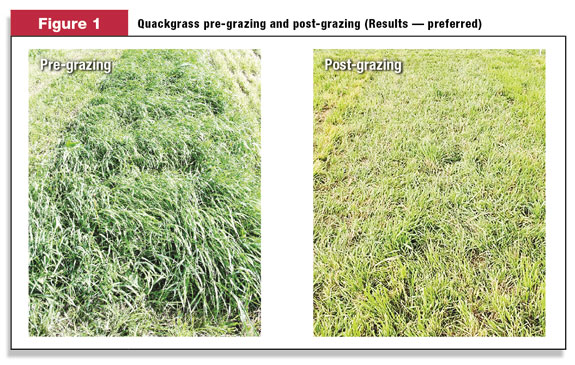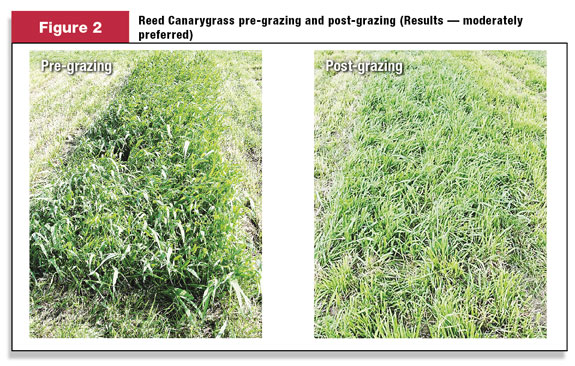However, horse grazing habits make pasture management challenging for horse owners. Horses are very selective grazers and will often overgraze preferred areas of grass to a very short height while avoiding other seemingly quality areas of the pasture.
To better understand the selective nature of horse grazing and its effects on forage grass persistence and yield, a research project was designed to evaluate grazing preferences, persistence and yield of twelve cool-season grasses under horse grazing.
Research was conducted in St. Paul, Minnesota, during the 2010 and 2011 growing seasons, using stands of grasses established on August 13, 2009.
Grass species included ‘Barolex’ tall fescue, ‘Hidden Valley’ meadow fescue, ‘Everett’ quackgrass, ‘Agassiz’ smooth bromegrass, ‘Fleet’ meadow bromegrass, ‘Marathon’ reed canarygrass, ‘Survivor’ perennial ryegrass, ‘Winneton’ timothy, ‘Ginger’ Kentucky bluegrass, ‘Garrison’ creeping foxtail and ‘Baridana’ orchardgrass.
Fifty pounds of nitrogen per acre was applied in April and June of 2011. Four adult horses were used for the duration of the grazing study (May through October in 2010 and May through September in 2011).
Horses grazed the plots for eight hours a day, for three consecutive days each month. Prior to each grazing, plots were mechanically harvested to determine yield, hand harvested for quality and visually assessed for percent ground cover on a scale of 0 (bare ground) to 100 (100 percent ground cover) to determine persistence.
Following grazing, grass removal was assessed on a scale of 0 (no grazing activity) to 100 (100 percent of the plants were grazed) to determine preference. After grazing, all plots were mowed to three-inch height and allowed to regrow.

Weather conditions were ideal during the 2010 and 2011 grazing seasons.
Temperatures were at or slightly above normal during both years and above-average rainfall was recorded.
However, rainfall basically ceased in the fall of 2011, resulting in an early end to the grazing season (i.e. no grazing occurred in October 2011).
Throughout the grazing season, horses demonstrated strong preferences for specific grasses.
Timothy, Kentucky bluegrass, perennial ryegrass, quackgrass and meadow fescue were consistently most preferred by the horses (Figure 1).
Smooth bromegrass, tall fescue, reed canarygrass and orchardgrass were moderately preferred (Figure 2), while creeping foxtail and both varieties of meadow bromegrass were least preferred.

Grouping grass species that result in a similar horse preference should reduce the selective grazing behavior of horses and reduce the amount of maintenance required on horse pastures.
Although preference is important, other agronomic factors also need to be considered when planting a horse pasture.
Grasses responded differently to horse grazing. Orchardgrass, meadow fescue and tall fescue were the most persistent species, while timothy, smooth bromegrass and creeping foxtail were least persistent.
Annual forage yield also differed among grass varieties. Orchardgrass, meadow fescue and tall fescue had the highest yield at greater than four tons per acre. Timothy, smooth bromegrass and creeping foxtail had the lowest yield, with less than 3.4 tons per acre.
Based on these results, in a sandy-loam soil in the upper Midwest, planting a mixture of Kentucky bluegrass, orchardgrass, perennial ryegrass and fescues (endophyte-friendly or endophyte-free) should achieve a balance between horse preference and forage persistence and yield. FG
Co-authors: Craig Sheaffer, Ph.D. and Beth Allen, University of Minnesota










